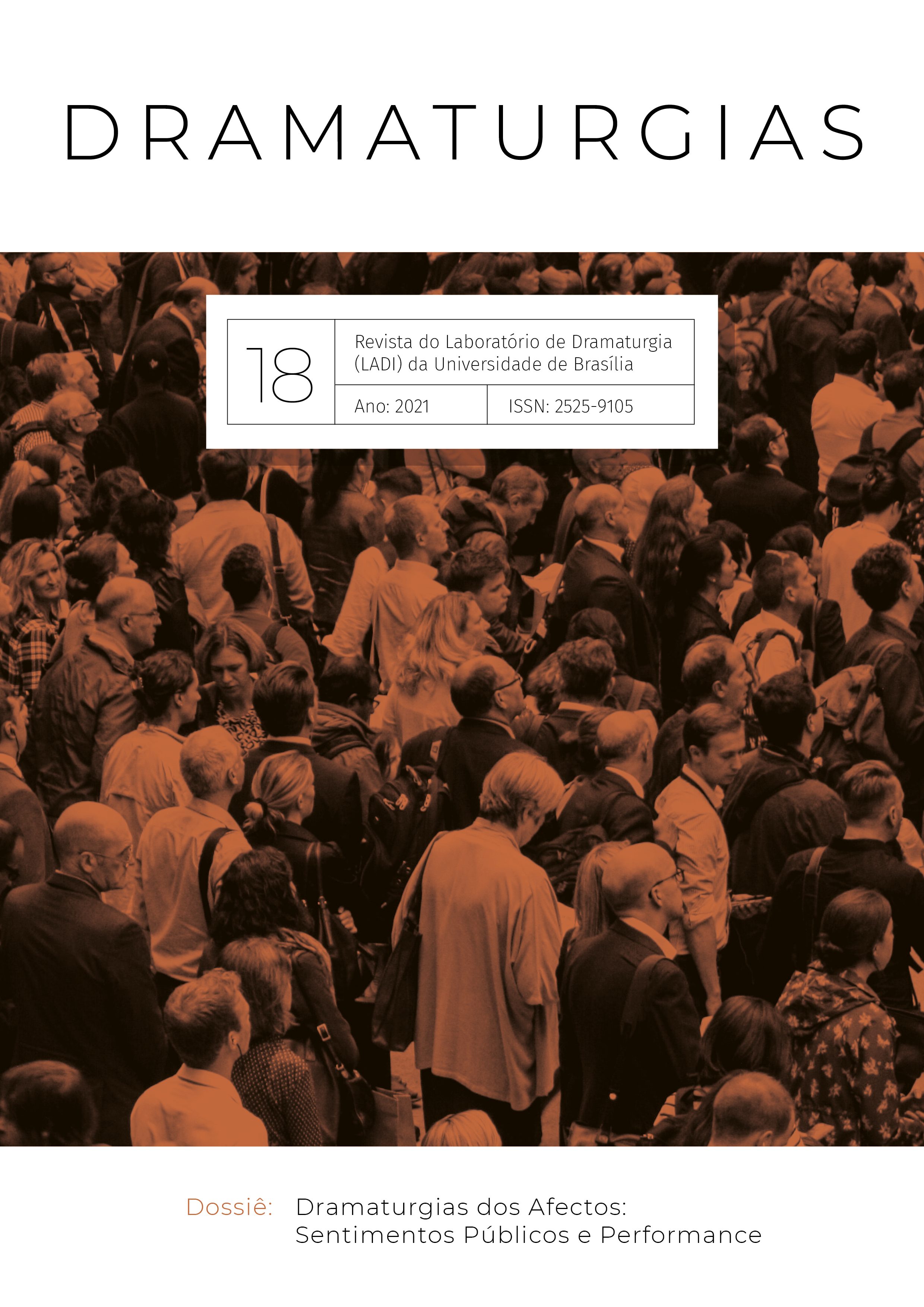Victor Hugo’s avant-garde: surrealist painting and Théâtre en liberté
DOI:
https://doi.org/10.26512/dramaturgias18.41320Keywords:
Victor Hugo, TheatreAbstract
In Brazil, there are few researches that deal with Victor Hugo as an artist not only verbal, but also non-verbal, considering his vast pictorial work. The transpositions from one system of signs to another, such as those in novels by Hugo (Notre-Dame de Paris, Les Misérables, L’Homme qui rit, etc.), in the form of comic books, dance shows, pieces by theater, series or films (LASTER, 2012), find theoretical anchoring for the “interpretation of linguistic signs through non-linguistic sign systems” (JAKOBSON, 2003, p. 64-65). In this relationship, it seems important to consider the elements that make up the artistic imagination: its trajectory, its formation, its creative process, its production context (social and political). Thus, we believe that the artistic imagination that derives from Victor Hugo’s pictorial art dialogues intimately with the creative imagination of his literary production.
We are interested here in investigating, based on the painting Pleine Lune (~1856), produced during the artist’s exile, the elements present in the textual dramaturgy of the play La Forêt Mouillée (1854), written in the same period, and which would function as metaphors in the pictorial, as well as the signifying system resulting from the contact between dramaturgy and the artist’s pictorial work.
In the theatrical field, the mise en scène, as an autonomous work, as well as the figure of the director date from the 19th century (UBERSFELD, 1996, p. 54- 56). Although there were troupes and many theaters, at the time, the role of thedirector (metteur en scène) had not been institutionalized, as the structure of the play was conceived as a whole (text, scenery, costumes, etc.). The mise en scène (staging) took shape with the German composer Richard Wagner (NAUGRETTE, 2001, p 109), who tried to introduce a series of reforms in the theater orchestra with the aim of raising the performance of the musicians to an impeccable level. In this context, Hugo’s particular interest in the mise en scène of his dramas was manifested both in the profusion of didactics present in the texts, which contained scene indications, and in the interventions he carried out in the different components of theatrical production, even choosing himself , the main actors of the performances of his plays. In his career as a playwright, Hugo also consolidates his break with the tradition of romantic drama, after years of success, and confirms his avant-garde tradition with the Théâtre en Liberté, in which La Forêt Mouillée (1854) is inserted.
Thus, supported by a critical apparatus that supports the intersection between dramaturgy, painting and literature, as well as by some contemporary montages of the play, this article intends to reflect on the existence of a communicating imagery source between the textual dramaturgy of the play La Forêt Mouillée (1854) and the artist’s pictorial creative process, through the canvas Pleine Lune (~1856).
Downloads
Downloads
Published
How to Cite
Issue
Section
License
Copyright (c) 2021 Raphael Oliveira Vitali

This work is licensed under a Creative Commons Attribution-ShareAlike 4.0 International License.
Autores mantém os direitos autorais e concedem à revista o direito de primeira publicação, com o trabalho simultaneamente licenciado sob a Licença Creative Commons Attribution que permite o compartilhamento do trabalho com reconhecimento da autoria e publicação inicial nesta revista.



